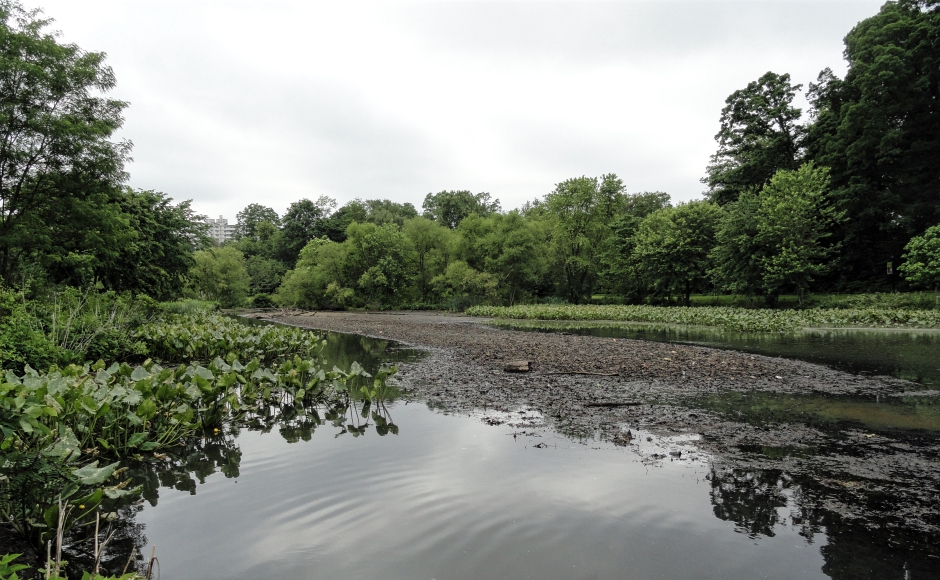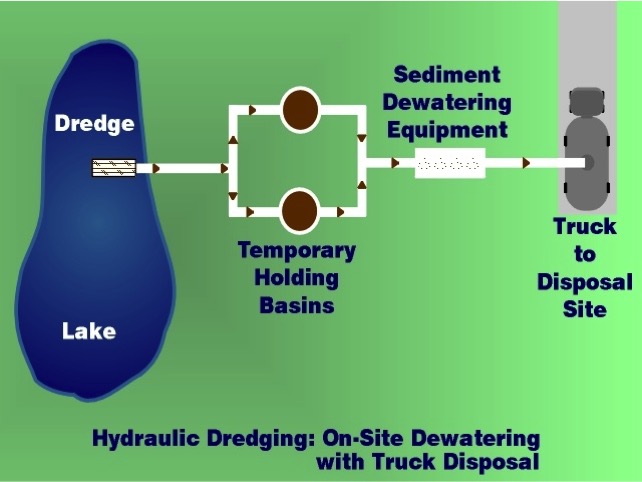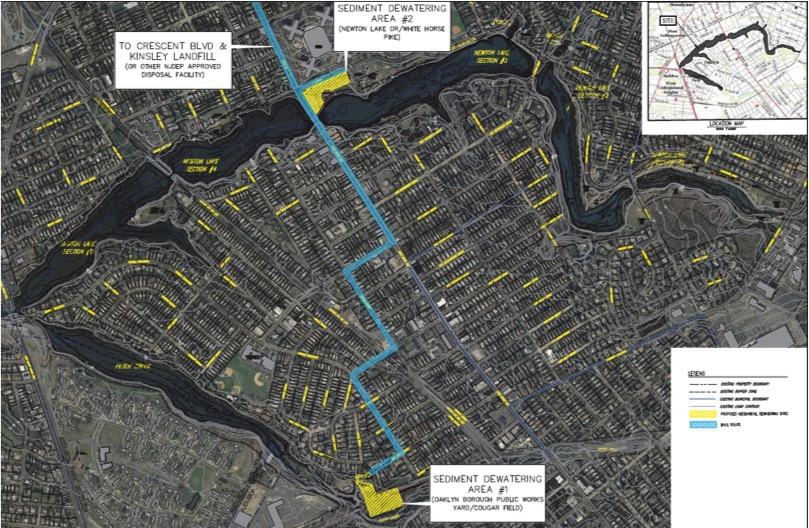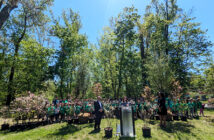Touching five towns from Cuthbert Boulevard to the Black Horse Pike, it’s the largest capital project to be overseen by the Camden County government. Environmentalists want controls on its process.
By Matt Skoufalos | August 13, 2018
Before October 2018 is out, Camden County will have begun its most ambitious capital project to date: the 18-month, $25-million dredging and restoration of Newton Creek.
The 110-acre project stretches from Cuthbert Boulevard in Haddon Township to the Black Horse Pike in Audubon, and touches properties in Audubon Park, Oaklyn, and Collingswood, as well.
Even financed at zero-percent interest on a 30-year loan from the New Jersey Environmental Infrastructure Trust, the restoration represents a sum potentially equal to the county’s annual capital budget, and won’t conclude until the spring of 2020 at the earliest.
But the county government views the task as a generational fix, and one that should last as long.
“The goal is to get the body [of water] to be back to its original form, so it can be restored for years to come, and be enjoyed by residents in future years,” said Camden County Freeholder Jeff Nash in an August 8 public meeting.
Conditions at Newton Lake are caused by an excess of nitrogen and phosphorus, which pour into the lake, with silt, through stormwater runoff. Those chemicals collect at the bottom of the creek, where they feed algae and aquatic weeds.
“We want to control the nitrogen and phosphorus coming in, and we want to get rid of the sediment,” said engineer Frank Browne of the Landsale, Pennsylvania-based F.X. Browne, Inc., which will oversee the project.
The dredge will pull about 257,000 cubic yards of silt from the creek, deepening it to at least five feet in the center, while engineers restore the Newton Creek shoreline and stabilize its banks.
The work should create “a more ecologically sustainable, healthy lake,” Browne said.
Overview
Through hydraulic dredging, F.X. Browne will pump a slurry of silt and water from the bottom of the creek beds at Newton Lake and Peter Creek.
It will then be pumped to mechanical dewatering stations at the Newton Lake Park boat ramp (White Horse Pike and Newton Lake Drive) in Collingswood and the Oaklyn Cougars football field (220 West Cedar Avenue).
After the slurry dries out there, it will be trucked to area landfills via sealed containers. Road crews will accompany the shipments, which will be made via county roads, to minimize any dust.
F.X. Browne’s permit application lists three potential discharge options for returning dredged water into the creek:
- directly discharging it back into the waterway, or diluting it with lake water at the dewatering site, and then directly discharging it back into the lake;
- diluting it with treated municipal water before discharging it back into the lake;
- or discharging it into the sewer for treatment at the Camden County Municipal Utilities Authority.
Nichols Pond, which borders Merrick and Bettlewood Avenues in Collingswood, and an unnamed pond on West Park Avenue, also in Collingswood, will be drawn down and dredged with bulldozers.
Browne said the county would like to begin work on the project before mid-October, with work progressing as weather permits until the winter. Work will then resume in July 2019, with an anticipated completion date of spring 2020.
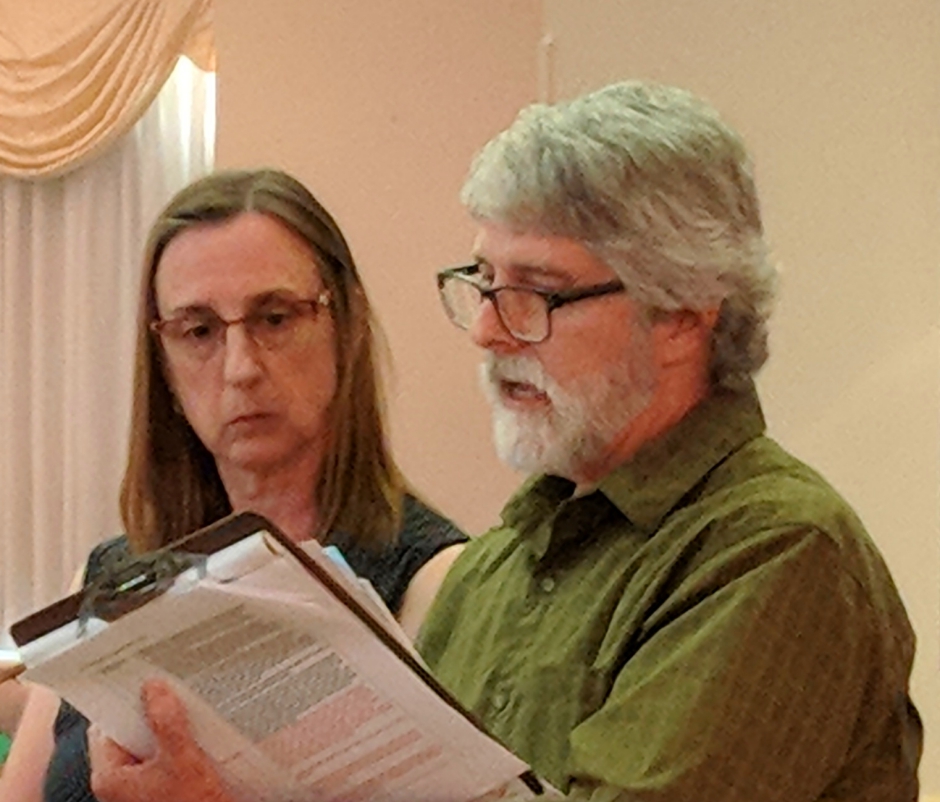
Environmentalists Lorraine Prince and Fred Stine of the Delaware Riverkeepers Network. Credit: Matt Skoufalos.
Contamination, controls
But environmentalists are concerned about chemicals that have shown up in sediment samples taken from the creek, and whether flowback water from the dredging process will re-circulate them.
Between June and October 2017, tests revealed lead, PCB congeners (industrial lubricants), and heptachlor epoxide (pesticides) above regulatory limits in the water collected.
Soil samples taken at 33 sites showed high levels of similar chemicals.
The highest reported levels of contamination were taken from sites near Cuthbert Boulevard in Haddon Township, Goff Avenue in Oaklyn, the Black Horse Pike in Audubon Park, and both ponds in Collingswood.
Haddon Township resident Fred Stine, who works with the Delaware Riverkeeper Network, said that if return water from the dredge isn’t managed appropriately, those chemicals could be reintroduced to the waterways. He encouraged residents to keep tabs on the project.
“I believe that the county has the logistical and technical expertise and knowledge from the Cooper River dredging project to properly manage the Newton dredge,” Stine said in an e-mail.
“It’s very important that the residents stay actively informed and vocal as this project proceeds. The county and their contractors need to hear form folks when things are going right and wrong.”
More than anything, Stine said he is frustrated by many of the expansive local zoning and land use practices in the communities that comprise the Newton Creek watershed. He’d like municipalities to have impervious coverage mitigation plans, and encourage practices to counteract the effects of buildout.
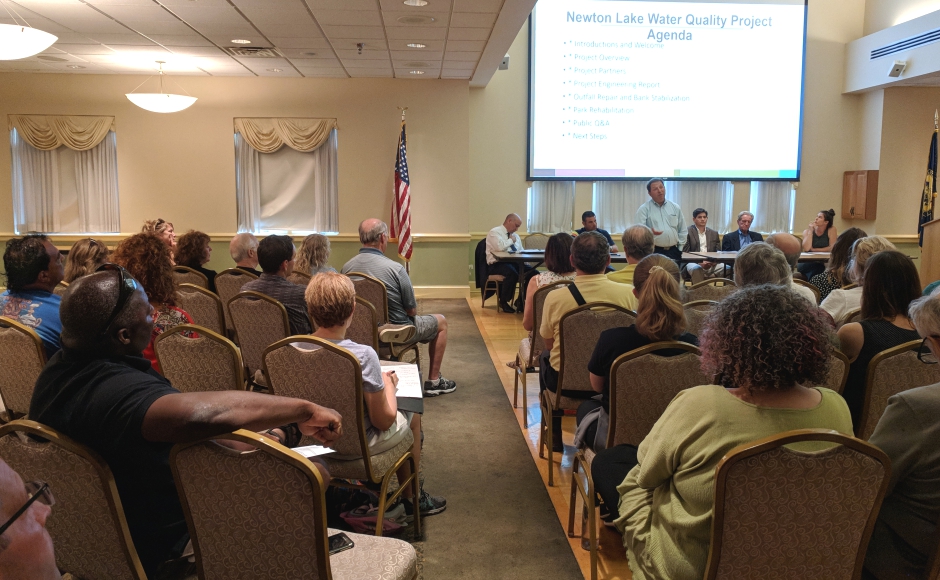
The Camden County government addressed residents in Collingswood August 8 at a meeting on the Newton Lake dredge. Credit: Matt Skoufalos.
“The overwhelming majority of the pollution inputs impacting the lakes are coming from the rooftops, roads, parking lots, and other impervious coverage many blocks away,” Stine said.
“And that impervious coverage continues to increase.
“Every time there’s a lot subdivided, or someone wants to put a family room onto their house, or even put a pool in, more pollution is being sent to the Newton,” he said.
Stine said local governments “didn’t get that they were the source of the problem,” and that he thinks things won’t change without some pressure from the top.
“If the county keeps paying for fixing the problem caused by the towns without calling them on it, the towns likely will happily continue business as usual,” he said.
“Every time there’s a lot subdivided, or someone wants to put a family room onto their house, more pollution is being sent to the Newton. If the county keeps fixing the problem caused by the towns without calling them on it, the towns likely will happily continue business as usual.”
—Fred Stine, Delaware Riverkeeper Network
Deputy County Administrator Dominic Vesper promised that the Newton Lake project would run with frequent community feedback sessions and strict safety controls.
“When the water doesn’t meet DEP’s regulations, you’ve got to stop [dredging],” Vesper said. “Cooper River had zero sanctions, zero fines. The DEP didn’t write us up for anything, and they gave us one six-month extension.”
Nash downplayed the significance of any chemicals reported in the creek, while CCMUA Executive Director Andy Kricun said the waterway would be monitored throughout the project.
“There’s no zero,” Kricun said. “If we find something that’s above the standard, of course we’re going to take it out.
“We’re going to retain a construction manager and inspector who will be onsite at all times to make sure that the sediment is kept to an absolute minimum, and if that doesn’t happen, then stopping the job,” he said.
Access, improvements
“There’s significant inconvenience for many of the residents,” Nash said.
“The positive benefit for generations to come is going to be the reason we are going to put up with that inconvenience.
“The alternative,” he said, “is not to do it.
“There will be algae blooms and spatterdocks filling the entire watershed,” Nash said.
“It will die. We are dealing with an immediate problem that if we do not resolve it.”
Of all the public officials in attendance, few seemed as eager to get the cleanup underway as Oaklyn Mayor Bob Forbes, who described the project as a career goal.
While waiting for some outside help in the cleanup of its portion of Newton Lake, which includes Peter Creek, the borough purchased its own Truxor amphibious tractor. In the years it’s been operational, Oaklyn public works staff have cleared enough material to improve the flow of the creek (and even used the vehicle in a water rescue).
“Everybody enjoys Cooper River now that it’s opened up,” Forbes said. “Even just by opening the creek up with the Truxor, we have people out there in kayaks.
“To be able to get this done while I’m still in office is a huge bonus for me,” he said.
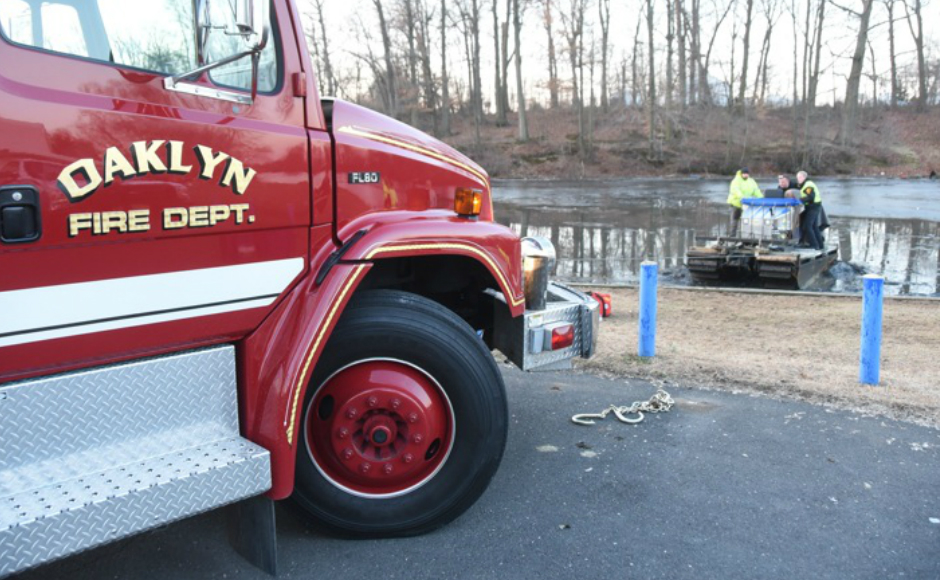
Oaklyn Fire Department tows in a Truxor vehicle during the water rescue of a Haddon Township man from Peter Creek Tuesday morning. Credit: Curt Hudson.
A 50-year Oaklyn resident, Forbes remembers the odor of sewage in the creek would peak in August.
That’s diminished since the establishment of the CCMUA, but with street-level stormwater still flowing directly into the waterway, he doesn’t know how the dredging project will address future municipal runoff.
“Goff and Washington [Avenues] drop right in,” he said.
“What are we supposed to do?”
At the conclusion of the project, Camden County Parks Director Maggie McCann Johns said the waterway will be cleaner, and with its banks stabilized, will offer additional recreational opportunities.
“Original fishing piers in the water will be improved upon; areas of access that people would like to see,” McCann Johns said. “We’ve been working more closely with our environmental partners to see that that riparian [buffer]is maintained, but also to see that people can get access to the water.”
Related coverage:
- ‘State of the Watershed’: Challenges, Solutions for Newton Creek – May 28, 2015
- Camden County to Dredge Newton Lake – July 21, 2015
- $20M Newton Creek Cleanup Could Resolve Longstanding Community Environmental Issues – February 11, 2018
Please support NJ Pen with a subscription. Get e-mails, or follow us on Facebook, Twitter, and Instagram.



